Black And Decker DR600 Handleiding
Black And Decker
Boormachine
DR600
Bekijk gratis de handleiding van Black And Decker DR600 (6 pagina’s), behorend tot de categorie Boormachine. Deze gids werd als nuttig beoordeeld door 60 mensen en kreeg gemiddeld 4.6 sterren uit 30.5 reviews. Heb je een vraag over Black And Decker DR600 of wil je andere gebruikers van dit product iets vragen? Stel een vraag
Pagina 1/6

• Use only accessories that are recommended by the manufacturer for your model.
Accessories that may be suitable for one tool, may become hazardous when used on
another tool.
SERVICE
• Tool service must be performed only by qualified repair personnel. Service or
maintenance performed by unqualified personnel could result in a risk of injury.
• When servicing a tool, use only identical replacement parts. Follow instructions in the
Maintenance section of this manual. Use of unauthorized parts or failure to follow
Maintenance Instructions may create a risk of electric shock or injury.
SPECIFIC SAFETY RULES
• Hold tool by insulated gripping surfaces when performing an operation where the
cutting tool may contact hidden wiring or its own cord. Contact with a "live" wire will
make exposed metal parts of the tool "live" and shock the operator.
• When working on a ladder or on scaffolding be sure to lay the tool down on its side
when not in use. Some tools with large battery packs will stand upright but may be easily
knocked over.
WARNING: Some dust created by power sanding, sawing, grinding, drilling, and other
construction activities contains chemicals known to cause cancer, birth defects or other
reproductive harm. Some examples of these chemicals are:
• lead from lead-based paints,
• crystalline silica from bricks and cement and other masonry products, and
• arsenic and chromium from chemically-treated lumber. (CCA)
Your risk from these exposures varies, depending on how often you do this type of work. To
reduce your exposure to these chemicals: work in a well ventilated area, and work with
approved safety equipment, such as those dust masks that are specially designed to filter
out microscopic particles.
• Avoid prolonged contact with dust from power sanding, sawing, grinding, drilling, and
other construction activities. Wear protective clothing and wash exposed areas with
soap and water. Allowing dust to get into your mouth, eyes, or lay on the skin may promote
absorption of harmful chemicals.
CAUTION: Wear appropriate hearing protection during use. Under some conditions
and duration of use, noise from this product may contribute to hearing loss.
The label on your tool may include the following symbols.
V ..........................volts A..........................amperes
Hz ........................hertz W ........................watts
min ........................minutes ......................alternating current
......................direct current no ........................no load speed
..........................Class II Construction ........................earthing terminal
........................safety alert symbol .../min ..................revolutions or
reciprocations
per minute
SAFETY WARNINGS AND INSTRUCTIONS: DRILLS
• When drilling or driving into walls, floors or wherever live electrical wires may be
encountered, DO NOT TOUCH ANY METAL PARTS OF THE TOOL! Hold the tool only
by the plastic handle to prevent shock.
• Do not lock the tool ON when drilling by hand. Refer to Operating Instructions-Switch.
• Hold drill firmly to control the twisting action of the drill. If your drill is equipped with a
side handle, always use the side handle.
WARNING: Drill may stall (if overloaded or improperly used) causing a twist. Always
expect the stall. Grip the drill firmly to control the twisting action and prevent loss of control
which could cause personal injury. If a stall does occur, release the trigger immediately and
determine the reason for the stall before re-starting.
• Always unplug the drill when attaching or removing accessories. When attaching
accessories in the drill chuck, it is important to securely tighten the chuck using all three
holes to prevent slippage. When using a keyless chuck, hand tighten firmly.
MOTOR
Your Black & Decker tool is powered by a Black & Decker-built motor. Be sure your power
supply agrees with nameplate marking. 120 Volts AC only means your drill will operate on
standard 60 Hz household power. Do not operate AC tools on DC. A rating of 120 volts
AC/DC means that your tool will operate on standard 60 Hz AC or DC power. This information
is printed on the nameplate. Lower voltage will cause loss of power and can result in over-
heating. All Black & Decker tools are factory-tested; if this tool does not operate, check the
power supply.
USE OF EXTENSION CORDS
Make sure the extension cord is in good condition before using. Always use the proper size
extension cords with the tool – that is, proper wire size for various lengths of cord and heavy
enough to carry the current the tool will draw. Use of an undersized cord will cause a drop in
line voltage resulting in loss of power and overheating. For proper size cords see chart
below.
ASSEMBLY/ADJUSTMENT SET-UP
WARNING: Always unplug drill from power supply before any of the following
operations.
SIDE HANDLE (1/2" DRILLS ONLY)
• If your drill is equipped with a side handle, it must be installed properly to control the drill
General Safety Rules
WARNING: Read and understand all instructions. Failure to follow all instructions listed
below may result in electric shock, fire and/or serious personal injury.
SAVE THESE INSTRUCTIONS
WORK AREA
• Keep your work area clean and well lit. Cluttered benches and dark areas invite accidents.
• Do not operate power tools in explosive atmospheres, such as in the presence of
flammable liquids, gases, or dust. Power tools create sparks which may ignite the dust or
fumes.
• Keep bystanders, children, and visitors away while operating a power tool.
Distractions can cause you to lose control.
ELECTRICAL SAFETY
• Double insulated tools are equipped with a polarized plug (one blade is wider than the
other.) This plug will fit in a polarized outlet only one way. If the plug does not fit fully
in the outlet, reverse the plug. If it still does not fit, contact a qualified electrician to
install a polarized outlet. Do not change the plug in any way. Double insulation
eliminates the need for the three wire grounded power cord and grounded power supply
system.
• Avoid body contact with grounded surfaces such as pipes, radiators, ranges and
refrigerators. There is an increased risk of electric shock if your body is grounded.
• Don’t expose power tools to rain or wet conditions. Water entering a power tool will
increase the risk of electric shock.
• Do not abuse the cord. Never use the cord to carry the tools or pull the plug from an
outlet. Keep cord away from heat, oil, sharp edges or moving parts. Replace damaged
cords immediately. Damaged cords increase the risk of electric shock.
• When operating a power tool outside, use an outdoor extension cord marked "W-A"
or "W." These cords are rated for outdoor use and reduce the risk of electric shock.
PERSONAL SAFETY
• Stay alert, watch what you are doing and use common sense when operating a power
tool. Do not use tool while tired or under the influence of drugs, alcohol, or
medication. A moment of inattention while operating power tools may result in serious
personal injury.
• Dress properly. Do not wear loose clothing or jewelry. Contain long hair. Keep your
hair, clothing, and gloves away from moving parts. Loose clothing, jewelry, or long hair
can be caught in moving parts. Air vents cover moving parts and should be avoided.
• Avoid accidental starting. Be sure switch is off before plugging in. Carrying tools with
your finger on the switch or plugging in tools that have the switch on invites accidents.
• Remove adjusting keys or wrenches before turning the tool on. A wrench or key that is
left attached to a rotating part of the tool may result in personal injury.
• Do not overreach. Keep proper footing and balance at all times. Proper footing and
balance enables better control of the tool in unexpected situations.
• Use safety equipment. Always wear eye protection. Dust mask, non-skid safety shoes,
hard hat, or hearing protection must be used for appropriate conditions.
TOOL USE AND CARE
• Use clamps or other practical way to secure and support the workpiece to a stable
platform. Holding the work by hand or against your body is unstable and may lead to loss
of control.
• Do not force tool. Use the correct tool for your application. The correct tool will do the
job better and safer at the rate for which it is designed.
• Do not use tool if switch does not turn it on or off. Any tool that cannot be controlled with
the switch is dangerous and must be repaired.
• Disconnect the plug from the power source before making any adjustments,
changing accessories, or storing the tool. Such preventative safety measures reduce
the risk of starting the tool accidentally.
• Store idle tools out of reach of children and other untrained persons. Tools are
dangerous in the hands of untrained users.
• Maintain tools with care. Keep cutting tools sharp and clean. Properly maintained
tools, with sharp cutting edges are less likely to bind and are easier to control.
• Check for misalignment or binding of moving parts, breakage of parts, and any other
condition that may affect the tools operation. If damaged, have the tool serviced
before using. Many accidents are caused by poorly maintained tools.
KEY INFORMATION YOU SHOULD KNOW:
• Reversing drills must be switched into forward or reverse in order to operate. They
will not run with the switch control lever in the center position.
• Securely tighten chuck jaws using all three holes except with keyless chucks which
should be securely hand tightened.
VEA EL ESPAÑOL EN LA CONTRAPORTADA.
SAVE THIS MANUAL FOR FUTURE REFERENCE.
INSTRUCTIVO DE OPERACIÓN, CENTROS DE SERVICIO Y
PÓLIZA DE GARANTÍA. LÉASE ESTEADVERTENCIA:
INSTRUCTIVO ANTES DE USAR EL PRODUCTO.
INSTRUCTION MANUAL
Catalog Numbers DR200, DR210, DR220, DR400, DR402, DR500, DR600
Form No. 611728-00 (APR 02-1) Copyright © 2002 Black & Decker Printed in USA
3
3
3
3
33
3
3
3
3
33/
/
/
/
//
/
/
/
/
// 8
8
8
8
88
8
8
8
8
88 "
"
"
"
""
"
"
"
"
""
(
(
(
(
((
(
(
(
(
((1
1
1
1
11
1
1
1
1
11 0
0
0
0
00
0
0
0
0
00 m
m
m
m
mm
m
m
m
m
mmm
m
m
m
mm
m
m
m
m
mm)
)
)
)
))
)
)
)
)
))
a
a
a
a
aa
a
a
a
a
aan
n
n
n
nn
n
n
n
n
nnd
d
d
d
dd
d
d
d
d
dd
1
1
1
1
11
1
1
1
1
11/
/
/
/
//
/
/
/
/
// 2
2
2
2
22
2
2
2
2
22"
"
"
"
""
"
"
"
"
""
(
(
(
(
((
(
(
(
(
((1
1
1
1
11
1
1
1
1
11 3
3
3
3
33
3
3
3
3
33m
m
m
m
mm
m
m
m
m
mm m
m
m
m
mm
m
m
m
m
mm )
)
)
)
))
)
)
)
)
))
D
D
D
D
DD
D
D
D
D
DDr
r
r
r
rr
r
r
r
r
rr i
i
i
i
ii
i
i
i
i
iil
l
l
l
ll
l
l
l
l
lll
l
l
l
ll
l
l
l
l
ll s
s
s
s
ss
s
s
s
s
ss
a
a
a
a
aa
a
a
a
a
aa n
n
n
n
nn
n
n
n
n
nn d
d
d
d
dd
d
d
d
d
dd
H
H
H
H
HH
H
H
H
H
HHa
a
a
a
aa
a
a
a
a
aa m
m
m
m
mm
m
m
m
m
mmm
m
m
m
mm
m
m
m
m
mm e
e
e
e
ee
e
e
e
e
eer
r
r
r
rr
r
r
r
r
rr
D
D
D
D
DD
D
D
D
D
DD r
r
r
r
rr
r
r
r
r
rri
i
i
i
ii
i
i
i
i
iil
l
l
l
ll
l
l
l
l
lll
l
l
l
ll
l
l
l
l
lls
s
s
s
ss
s
s
s
s
ss
Minimum Gage for Cord Sets
Volts Total Length of Cord in Feet
120V 0-25 26-50 51-100 101-150
240V 0-50 51-100 101-200 201-300
Ampere Rating
More Not more American Wire Gage
Than Than
0 - 6 18 16 16 14
6 - 10 18 16 14 12
10 - 12 16 16 14 12
12 - 16 14 12 Not Recommended
Switch Control Lever
Levier de commande de
l'interrupteur
Palanca de control
Lock-on button
Bouton de verrouillage
Boton de encendido
permanente
Hammering position
Mode de percussion
Posicion de
rotomartillo
Drilling position
Mode de perçage
Pos on de taladradoici
Lever
Levier
Palanca
12
BEFORE RETURNING THIS PRODUCT
FOR ANY REASON PLEASE CALL
1-800-54-HOW-TO (544-6986)
IF YOU SHOULD EXPERIENCE A PROBLEM
WITH YOUR BLACK & DECKER PRODUCT,
CALL 1-800-54-HOW-TO (544-6986)
BEFORE YOU CALL, HAVE THE FOLLOWING INFORMATION AVAILABLE, CATALOG No.,
TYPE No., AND DATE CODE. IN MOST CASES, A BLACK & DECKER REPRESENTATIVE CAN
RESOLVE THE PROBLEM OVER THE PHONE. IF YOU HAVE ASUGGESTION OR COMMENT,
GIVE US A CALL. YOUR FEEDBACK IS VITAL TO BLACK & DECKER.
5
34

• Insert bolt into recessed hole with molded hex shape, making sure that hex head is seated
fully to prevent bolt from turning.
• Place circular opening over drill chuck and onto front of drill gear case.
• Place the drill on its side and holding the bolt head with your finger, thread handle onto bolt.
The handle now has a full range of 360 degrees around the drill.
OPERATING INSTRUCTIONS
WARNING: To reduce the risk of serious personal injury, read, understand and follow all
important safety warnings and instructions prior to using tool.
SWITCH
To turn the drill ON squeeze the trigger switch. The farther the trigger is depressed, the higher
the speed of the drill. To turn the tool OFF release the trigger switch. The drill can be locked
ON (maximum RPM only) for continuous use by squeezing the trigger while pushing in on the
locking button (Fig .1). Hold the locking button in while you release the trigger switch and then
release the locking button. The drill will continue to run. To turn the drill OFF from a locked ON
condition, squeeze and release the trigger.
WARNING: The drill should only be locked ON when it is held stationary in a drill press
stand or other means; NOT BY HAND! Never unplug the tool with the locking feature
engaged. To do so will cause the tool to start immediately the next time it is plugged in.
FORWARD/REVERSE (DR200, DR210, DR220, DR400, DR402, DR600)
To select forward rotation push the switch control lever to the RIGHT (when viewed from the
chuck end) (Fig.1). To select reverse push the lever to the LEFT (when viewed from the chuck
end). After all reversing operations, switch the tool to the forward running mode.
NOTE: WHEN THE SWITCH CONTROL LEVER IS IN THE CENTER POSITION THE DRILL
WILL NOT OPERATE. DO NOT FORCE TRIGGER. SELECT FORWARD OR REVERSE
BEFORE TURNING DRILL ON.
FORWARD/REVERSE (DR500 ONLY) To select forward rotation push the switch control lever to the (when viewed from theLEFT
chuck end) (Fig.1). To select reverse push the lever to the (when viewed from theRIGHT
chuck end). After all reversing operations, switch the tool to the forward running mode.
NOTE: WHEN THE SWITCH CONTROL LEVER IS IN THE CENTER POSITION THE DRILL
WILL NOT OPERATE. DO NOT FORCE TRIGGER. SELECT FORWARD OR REVERSE
BEFORE TURNING DRILL ON.
CHUCK & KEY OPERATION (DR400, DR500, DR600)
Turn chuck collar to open chuck jaws. Place bit in chuck as far as it will go. Tighten chuck collar
by hand. Place chuck key in each of the three holes, and tighten in clockwise direction (Fig. 2).
Tighten chuck with all three holes to prevent slippage.
KEYLESS CHUCK OPERATION (DR200, DR210, DR402)
DR200, DR210, DR402 - To attach accessories, grasp the rear half of the chuck with one hand
and use your other hand to rotate the front half in the counterclockwise direction. Insert the bit
or other accessory fully into the chuck, and tighten securely by holding the rear half of the
chuck and rotating the front portion in the clockwise direction as viewed from the chuck end.
DR220 - Single Sleeve Chuck with Automatic Spindle Lock -This tool is equipped with a
feature that automatically locks the spindle when the tool is not running. This feature is a
normal condition which allows for tightening or loosening of the chuck with one hand while
holding the drill with the other. Loosen the chuck by rotating the sleeve counterclockwise (Fig.
3). Insert the bit or other accessory fully into the chuck, and tighten securely by rotating the
sleeve in the clockwise direction as viewed from the chuck end.
QUICK CHANGE ACCESSORY
DR220 Only - A quick change accessory is included with the DR220 which allows for
easy changing of hex shank accessories without loosening or tightening the chuck
jaws. To use the quick change accessory, insert the shaft into the DR220 chuck and tighten
securely. Insert a accessory by pulling back on the collar as shown in Figure 4.hex shank
Release the collar and the bit is held firmly. To release the bit simpy pull back on the collar and
pull the bit out.
HAMMER ACTION (DR400, DR402, DR600)
Your drill has hammer action which is engaged by sliding the hammer/drill selector lever. To
select hammering, turn off the drill and rotate the lever shown in Figure 5 so that the arrow on
the lever points to to the hammer symbol on the drill housing. To select drilling, turn off the drill
and rotate the lever so that the arrow on the lever points to the drill symbol.
WARNING: Do not attempt to tighten drill bits (or any other accessory) by gripping the
front part of the chuck and turning the tool on. Damage to the chuck and personal injury may
occur when changing accessories.
DRILLING
• Always unplug the drill when attaching or removing accessories. When attaching
accessories in the drill chuck, it is important to securely tighten the chuck using all three
holes to prevent slippage. When using a keyless chuck, hand tighten firmly.
• Use sharp drill bits only.
• Support and secure work properly, as instructed in the Safety Instructions.
• Use appropriate and required safety equipment, as instructed in the safety instructions.
• Secure and maintain work area, as instructed in the safety instructions.
• Run the drill very slowly, using light pressure, until the hole is started enough to keep the drill
bit from slipping out of it.
• Apply pressure in a straight line with the bit. Use enough pressure to keep the bit biting but
not so much as to stall the motor or deflect the bit.
• Hold the drill firmly to control its twisting action..
• DO NOT CLICK THE TRIGGER OF A STALLED DRILL OFF AND ON IN AN ATTEMPT TO
START IT. DAMAGE TO THE DRILL CAN RESULT.
• Minimize stalling on breakthrough by reducing pressure and slowly drilling through the last
part of the hole.
• Keep the motor running while pulling the bit out of a drilled hole. This will help reduce
jamming.
• Use a cutting lubricant when drilling metals. The exceptions are cast iron and brass which
should be drilled dry. The lubricants that work best are sulphurized cutting oil or lard oil.
Bacon grease will also serve.
• When using twist drill bits to drill holes in wood, it will be necessary to pull the bits out
frequently to clear chips from the flutes.
•
Plug in drill.
Make sure switch turns drill on and off.
KEYLESS CHUCK REMOVAL ( )DR200, DR210, DR220, DR402
UNPLUG DRILL. Tighten the chuck around the shorter end of a hex key (not supplied) of 1/4"
(6.4mm) or greater size. Using a soft hammer, strike key sharply in a counterclockwise
direction (when viewed from the front of the tool). This will loosen the chuck so that it can be
unscrewed by hand.
KEYED CHUCK REMOVAL (DR400)
UNPLUG DRILL. NOTE: Before attempting to remove chuck, shift the drill into the drilling
mode (not hammer, if so equipped ).
Place chuck key in any one of the three holes in the chuck. Strike the key sharply in a
counterclockwise direction (when viewed from the front of the tool). This will loosen the chuck
so that it can be removed by hand.
KEYED CHUCK REMOVAL ( )DR500, DR600
UNPLUG DRILL.
NOTE: Before attempting to remove chuck, shift the drill into the drilling mode (not hammer, if
so equipped).
Place chuck key in any one of the three holes in the chuck. Using a soft hammer, strike the key
in a clockwise direction. This will loosen the torx screw inside the chuck. Open chuck jaws fully,
insert a torx screwdriver into front of chuck between jaws to engage screw head. Remove
screw by turning clockwise (left-hand-thread). Place key in chuck. Using a soft hammer, strike
key sharply in a counterclockwise direction. This will loosen the chuck so that it can be
unscrewed by hand.
WARNING: It is important to support the work properly and to hold the drill firmly to
prevent loss of control which could cause personal injury If you have any questions on how
to properly operate tool, call: 1-800-54-HOW-TO (544-6986).
DRILLING IN WOOD
Holes in wood can be made with the same twist drill bits used for metal or with spade bits.
These bits should be sharp and should be pulled out frequently when drilling to clear chips
from the flutes.
DRILLING IN METAL
Use a cutting lubricant when drilling metals. The exceptions are cast iron and brass which
should be drilled dry. The cutting lubricants that work best are sulfurized cutting oil or lard oil;
bacon grease will also serve the purpose.
DRILLING IN MASONRY (Shift drill into hammer mode as shown in Fig. 5)
Use carbide tipped masonry bits. Refer to section. Keep even force on the drill butDrilling not so much that you crack the brittle material. A smooth, even flow of dust indicates the
proper drilling rate.
MAINTENANCE
Use only mild soap and damp cloth to clean the tool. Never let any liquid get inside the tool;
never immerse any part of the tool into a liquid.
IMPORTANT: To assure product SAFETY and RELIABILITY, repairs, maintenance and
adjustment should be performed by authorized service centers or other qualified service
personnel, always using identical replacement parts.
ACCESSORIES
Recommended accessories for use with your tool are available from your local dealer or
authorized service center. If you need assistance regarding accessories, please call:
1-800-54-HOW-TO (544-6986).
WARNING: The use of any accessory not recommended for use with this tool could be
hazardous.
SERVICE INFORMATION
Black & Decker offers a full network of company-owned and authorized service locations
throughout North America. All Black & Decker Service Centers are staffed with trained
personnel to provide customers with efficient and reliable power tool service.
Whether you need technical advice, repair, or genuine factory replacement parts, contact the
Black & Decker location nearest you. To find your local service location, refer to the yellow
pages directory under "Tools—Electric" or call: 1-800-54-HOW-TO.
FULL TWO-YEAR HOME USE WARRANTY
Black & Decker (U.S.) Inc. warrants this product for two years against any defects in material
or workmanship. The defective product will be replaced or repaired at no charge in either of
two ways.
The first, which will result in exchanges only, is to return the product to the retailer from whom
it was purchased (provided that the store is a participating retailer). Returns should be made
within the time period of the retailer s policy for exchanges (usually 30 to 90 days after the’
sale). Proof of purchase may be required. Please check with the retailer for their specific
return policy regarding returns that are beyond the time set for exchanges.
The second option is to take or send the product (prepaid) to a Black & Decker owned or
authorized Service Center for repair or replacement at our option. Proof of purchase may be
required. Black & Decker owned and authorized Service Centers are listed under "Tools-
Electric" in the yellow pages of the phone directory.
This warranty does not apply to accessories. This warranty gives you specific legal rights and
you may have other rights which vary from state to state. Should you have any questions,
contact the manager of your nearest Black & Decker Service Center. This product is not
intended for commercial use.
MAXIMUM RECOMMENDED CAPACITIES
Cat. # Type Steel Soft Wood Hard Wood Masonry
DR200 3/8"Drill 3/8"(9.5mm) Twist Bit 1-1/4"(31.7mm) 1"(25.4mm) N/A
DR210 3/8"Drill 3/8"(9.5mm) Twist Bit 1-1/4"(31.7mm) 1"(25.4mm) N/A
DR220 3/8"Drill 3/8"(9.5mm) Twist Bit 1-1/4"(31.7mm) 1"(25.4mm) N/A
DR400 3/8"Hammer Drill 3/8"(9.5mm) Twist Bit 1-1/4"(31.7mm) 1"(25.4mm) 3/8"(9.5mm)
DR402 3/8"Hammer Drill 3/8"(9.5mm) Twist Bit 1-1/4"(31.7mm) 1"(25.4mm) 3/8"(9.5mm)
DR500 1/2"Drill 1/2"(12.7mm) Twist Bit 1-1/2"(38.1mm) 1-1/4"(31.7mm) N/A
DR600 1/2"Hammer Drill 1/2"(12.7mm) Twist Bit 1-1/2"(38.1mm) 1-1/4"(31.7mm) 1/2"(12.7mm)
See ‘Tools-Electric’
– Yellow Pages –
for Service & Sales
Black & Decker (U.S.) Inc.,
701 E. Joppa Rd.
Towson, MD 21286 U.S.A.
P
P
P
P
PP
P
P
P
P
PP e
e
e
e
ee
e
e
e
e
eer
r
r
r
rr
r
r
r
r
rr c
c
c
c
cc
c
c
c
c
cce
e
e
e
ee
e
e
e
e
eeu
u
u
u
uu
u
u
u
u
uus
s
s
s
ss
s
s
s
s
sse
e
e
e
ee
e
e
e
e
ees
s
s
s
ss
s
s
s
s
ss
e
e
e
e
ee
e
e
e
e
eet
t
t
t
tt
t
t
t
t
tt
p
p
p
p
pp
p
p
p
p
ppe
e
e
e
ee
e
e
e
e
eer
r
r
r
rr
r
r
r
r
rr c
c
c
c
cc
c
c
c
c
cce
e
e
e
ee
e
e
e
e
eeu
u
u
u
uu
u
u
u
u
uus
s
s
s
ss
s
s
s
s
sse
e
e
e
ee
e
e
e
e
ees
s
s
s
ss
s
s
s
s
ss
à
à
à
à
àà
à
à
à
à
àà
p
p
p
p
pp
p
p
p
p
ppe
e
e
e
ee
e
e
e
e
ee r
r
r
r
rr
r
r
r
r
rr c
c
c
c
cc
c
c
c
c
ccu
u
u
u
uu
u
u
u
u
uus
s
s
s
ss
s
s
s
s
sss
s
s
s
ss
s
s
s
s
ssi
i
i
i
ii
i
i
i
i
iio
o
o
o
oo
o
o
o
o
oon
n
n
n
nn
n
n
n
n
nn
d
d
d
d
dd
d
d
d
d
dde
e
e
e
ee
e
e
e
e
ee
1
1
1
1
11
1
1
1
1
110
0
0
0
00
0
0
0
0
00
m
m
m
m
mm
m
m
m
m
mmm
m
m
m
mm
m
m
m
m
mm
(
(
(
(
((
(
(
(
(
((3
3
3
3
33
3
3
3
3
33/
/
/
/
//
/
/
/
/
//8
8
8
8
88
8
8
8
8
88
p
p
p
p
pp
p
p
p
p
ppo
o
o
o
oo
o
o
o
o
oo)
)
)
)
))
)
)
)
)
))
e
e
e
e
ee
e
e
e
e
eet
t
t
t
tt
t
t
t
t
tt
d
d
d
d
dd
d
d
d
d
dde
e
e
e
ee
e
e
e
e
ee
1
1
1
1
11
1
1
1
1
11 3
3
3
3
33
3
3
3
3
33
m
m
m
m
mm
m
m
m
m
mmm
m
m
m
mm
m
m
m
m
mm
(
(
(
(
((
(
(
(
(
(( 1
1
1
1
11
1
1
1
1
11 /
/
/
/
//
/
/
/
/
//2
2
2
2
22
2
2
2
2
22
p
p
p
p
pp
p
p
p
p
ppo
o
o
o
oo
o
o
o
o
oo)
)
)
)
))
)
)
)
)
))
AVANT DE RETOURNER LE PRODUIT, PEU IMPORTE LA RAI-
SON PRI RE DE COMPOSERÈ
1 800 544-6986
CONSERVER LE PRÉSENT GUIDE À TITRE DE RÉFÉRENCE.
RENSEIGNEMENTS IMPORTANTS
• é êLes perceuses dot es d'un inverseur de marche doivent tre en position de
marche avant ou arri re pour fonctionner. La perceuse ne fonctionne pas lorsqueè
le levier de commande de l'interrupteur se trouve la position centrale.à
• âBien serrer les m choires du mandrin dans chacun des trois trous, sauf les
mandrins sans cl qui se serrent fermement la main.é à
GUIDE D’UTILISATION
Modèles DR200, DR210, DR220, DR400, DR402, DR500, et DR600
MESURES DE SÉCURITÉ
AVERTISSEMENT : Lire et comprendre toutes les directives. Le non-respect de toutes
les directives suivantes pr sente des risques de secousses lectriques, d'incendie ou deé é
blessures graves.
CONSERVER CES MESURES.
ZONE DE TRAVAIL
• S'assurer que la zone de travail est propre et bien éclairée. Des établis encombrés et
des endroits sombres pr sentent des risques d'accidents.é
• Ne pas utiliser des outils électriques en présence de vapeurs explosives (comme
celles dégagées par des liquides, des gaz ou des poussières inflammables). Les
é é é étincelles g n r es par le moteur des outils lectriques peuvent enflammer les poussié ères
ou les vapeurs.
• Éloigner les curieux, les enfants et les visiteurs de la zone de travail lorsqu'on utilise
un outil électrique. Une distraction peut entra ner la perte de ma trise de l'outil.î î
MESURES DE SÉCURITÉ RELATIVES À L'ÉLECTRICITÉ
• Les outils à double isolation comportent une fiche polarisée (une lame plus large que
l'autre). La fiche n'entre que d'une façon dans une prise polarisée. Lorsque la fiche
n'entre pas à fond dans la prise, essayer de nouveau après avoir inversé les broches
de la fiche. Si la fiche n'entre toujours pas dans la prise, communiquer avec un
électricien certifié afin de faire installer une prise polarisée. Ne modifier en aucune
façon la fiche. La double isolation limine le besoin d'un cordon trifilaire mis la terre eté à
d'un syst me d'alimentation mis la terre.è à

• Éviter de toucher à des surfaces mises à la terre comme des tuyaux, des radiateurs,
des cuisinières et des réfrigérateurs. Les risques de secousses électriques sont plus
é é àlev s si le corps de l'utilisateur est mis la terre.
• Protéger les outils électriques de la pluie ou des conditions mouillées. Une infiltration
d'eau dans l'outil augmente les risques de secousses électriques.
• Manipuler le cordon avec soin. Ne jamais se servir du cordon afin de transporter
l'outil ni tirer sur le cordon pour débrancher l'outil. Éloigner le cordon des sources de
chaleur, des flaques d'huile, des arêtes tranchantes et des pièces mobiles.
Remplacer immédiatement les cordons endommagés. Les cordons endommagés
augmentent les risques de secousses électriques.
• Lorsqu'on utilise un outil électrique à l'extérieur, se servir d'un cordon de rallonge
prévu pour l'extérieur, portant la mention "W-A" ou "W". Ces cordons sont conçus pour
servir à
l'ext rieur et minimisent les risques de secousses é é
lectriques.
SÉCURITÉ PERSONNELLE
• Demeurer vigilant, prendre soin et faire preuve de jugement lorsqu'on utilise un outil
électrique. Ne pas s'en servir lorsqu'on est fatigué ou affaibli par des drogues, de
l'alcool ou des médicaments. De graves blessures peuvent r sulter d'un momenté
d'inattention lors de l'utilisation d'un outil électrique.
• Porter des vêtements appropriés. Éviter de porter des vêtements amples ou des
bijoux. Recouvrir la chevelure si elle est longue. Éloigner les cheveux, les vêtements
et les gants des pièces en mouvement qui peuvent les happer.
• Éviter les démarrages accidentels. S'assurer que l'interrupteur est en position hors
tension avant de brancher l'outil. Afin d' viter les risques de blessures, ne pas transporteré
l'outil avec le doigt sur l'interrupteur ni brancher un outil dont l'interrupteur est en position
sous tension.
• Enlever les clés de réglage avant de mettre l'outil sous tension. Une clé
qui est laiss
ée
sur une pi ce rotative de l'outil pr sente des risques de blessures.è é
• Ne pas dépasser sa portée. Garder son équilibre en tout temps. On s'assure d'une
meilleure ma trise de l'outil dans des situations impr vues gr une position stable et unî é âce à
bon équilibre.
• Porter de l'équipement de sécurité. Toujours porter des lunettes de sécurité. Dans
certaines conditions, il faut porter des masques respiratoires, des chaussures
antid curit ge-tympans.érapantes, un casque de sé é ou des protè
UTILISATION ET ENTRETIEN DE L'OUTIL
• Utiliser des pinces de serrage ou de tout autre moyen pratique afin de fixer et de
soutenir la pièce à ouvrer sur une plate-forme stable. La pièce est instable lorsqu'elle
est retenue par la main ou le corps de l'utilisateur. Cela présente des risques de perte de
maîtrise de l'outil.
• Ne pas forcer l'outil. Utiliser l'outil approprié à la tâche. L'outil appropri fonctionneé
mieux et s rement lorsqu'on s'en sert son rendement nominal.û à
• Ne pas se servir de l'outil lorsque l'interrupteur est défectueux. Le cas ant, l'outiléché
est dangereux et il faut le réparer.
• Débrancher l'outil de la source d'alimentation avant de le régler, d'en remplacer les
accessoires ou de le ranger. On minimise de la sorte le risque de d marrage accidentel deé
l'outil.
• Ranger l'outil hors de portée des enfants et de toute autre personne qui n'en connaît
pas le fonctionnement. L'outil est dangereux entre les mains de ces personnes.
• Prendre soin des outils. S'assurer que les outils de coupe sont tranchants et propres.
Des outils bien entretenus ar tes tranchantes ont moins tendance se coincer et ils seà ê à
maîtrisent mieux.
• Vérifier l'alignement et les attaches des pièces mobiles, le degré d'usure des pièces
ainsi que tout autre facteur susceptible de nuire au bon fonctionnement de l'outil.
Faire réparer un outil endommagé avant de s'en servir. Des outils mal entretenus sont la
cause de nombreux accidents.
• Utiliser seulement les accessoires recommandés par le fabricant. Des accessoires qui
conviennent à un outil peuvent pr senter des risques avec un autre outil.é
ENTRETIEN
• Confier l'entretien de l'outil seulement à du personnel qualifié. Le non-respect de la
présente directive présente des risques de blessures.
• Lors de l'entretien de l'outil, utiliser seulement des pièces de rechange identiques.
Respecter les consignes relatives à l'entretien du présent guide d'utilisation. Il y a
risque de secousses lectriques ou de blessures lorsqu'on utilise des pi ces non autorisé è ées
ou lorsqu'on ne respecte pas les consignes relatives l'entretien.à
MESURES DE SÉCURITÉ ADDITIONNELLES
• Saisir les surfaces isolées de l'outil lorsqu'on s'en sert là où il pourrait y avoir des fils
sous tension et lorsqu'il pourrait entrer en contact avec son propre fil. En cas de
contact avec un fil sous tension, les composantes m couvert de l'outilétalliques à dé
deviendraient sous tension et l'utilisateur subirait des secousses électriques.
• Lorsqu’on est installé sur une échelle ou un échafaudage pour travailler, on doit
déposer l’outil sur le côté lorsqu’on ne s’en sert plus. Bien que certains outils munis d’un
gros bloc-piles puissent tre plac la verticale, dans cette position, ils peuvent facilementê és à
ê étre renvers s.
L’étiquette de l’outil peut comporter les symboles suivants.
V ....................................volts A..........................ampères
Hz ..................................hertz W ........................watts
min ..................................minutes ......................courant alternatif
................................courant continu no ........................sous vide
....................................construction de classe II ........................borne de terre
..................................symbole d´avertissement .../min ..................tours ou courses
à la minute
AVERTISSEMENT : certains outils lectriques, tels que les sableuses, les scies, lesé
meules, les perceuses ou certains autres outils de construction, peuvent soulever de la
poussi entraère contenant des produits chimiques susceptibles d’ îner le cancer, des
malformations cong nitales ou pouvant tre nocifs pour le syst me reproductif. Parmi cesé ê è
produits chimiques, on retrouve :
· à le plomb dans les peintures base de plomb,
· ç la silice cristalline dans les briques et le ciment et autres produits de ma onnerie,
· ’ l arsenic et le chrome dans le bois de sciage ayant subi un traitement chimique
(comme de l niate de cuivre et de chrome). ’arsé
Le risque associ de telles expositions peut varier selon la fr quence avec laquelle oné à é
effectue ces travaux. Pour r duire l de tels produits, il faut travailler dans uné ’exposition à
endroit bien ventil quipement de sé et utiliser l’é écurité approprié tel un masque anti-
poussières spécialement conçu pour filtrer les particules microscopiques.
MESURES DE SÉCURITÉ : PERCEUSES
• Lorsqu'on perce ou qu'on visse dans les murs, les planchers ou tout autre endroit où
peuvent se trouver des fils sous tension, NE PAS TOUCHER À TOUT COMPOSANT
MÉTALLIQUE DE L'OUTIL. Ne le saisir que par ses surfaces de prise isolées afin de
se protéger des secousses électriques.
• àNe pas verrouiller l'outil en mode de fonctionnement lorsqu'on perce la main. Consulter la
rubrique relative au fonctionnement de l'interrupteur.
• Bien saisir la perceuse afin d'en maîtrise l'effet de torsion. Lorsque la perceuse
comporte une poignée latérale, toujours s'en servir.
AVERTISSEMENT : La perceuse peut caler (en raison d'une surcharge ou d'une
mauvaise utilisation) et provoquer un effet de torsion. Toujours en pr venir le blocage.é
Saisir fermement l'outil afin d'en emp cher l'effet de torsion et de prê évenir la perte de
maîtrise de l'outil qui pourrait occasionner des blessures. Lorsque la perceuse cale,
relâcher immédiatement la détente et déterminer la cause du blocage avant de se servir de
nouveau de l'outil.
• Toujours d brancher la perceuse avant d'y installer ou d'en retirer un accessoire. Lorsqu'oné
installe un accessoire dans le mandrin de la perceuse, il faut bien serrer le mandrin dans
chacun des trois trous afin d'emp cher le glissement de l'accessoire. Dans le cas d'unê
mandrin sans cl , il faut bien le serrer la main.é à
MOTEUR
Un moteur Black & Decker entra ne l'outil. Veiller ce que la tension d'alimentation soitî à
conforme aux exigences de la plaque signal tique de l'outil. La mention 120 volts c.a.é
seulement signifie que l'outil fonctionne seulement sur une alimentation domestique
standard de 60 Hz. Ne pas alimenter des outils alimentation secteur sur du courantà
continu. La mention 120 volts c.a. ou c.c. signifie que l'outil fonctionne sur du courant
standard alternatif ou continu de 60 Hz. Une baisse de tension entra ne une perte deî
puissance et la surchauffe. Tous les outils Black & Decker sont essayés avant de quitter
l'usine. Lorsque celui-ci refuse de fonctionner, v rifier la source de courant é électrique.
CORDONS DE RALLONGE
S'assurer que le cordon de rallonge est en bon tat avant de s'en servir. Toujours utiliser uné
cordon de calibre approprié à l'outil; savoir, le calibre appropri selon diff rentes longueursà é é
de rallonge et fournissant la tension n l'outil. L'utilisation d'un cordon de calibreécessaire à
inférieur entraîne une baisse de tension et la surchauffe de l'outil. Consulter le tableau plus
bas pour conna tre le calibre appropri des rallonges.î é
ASSEMBLAGE ET RÉGLAGE
AVERTISSEMENT : Toujours débrancher la perceuse avant de faire ce qui suit.
POIGNÉE LATÉRALE (PERCEUSES DE 13 MM (1/2 PO) SEULEMENT)
• é é îLorsque l'outil comporte une poign e lat rale, il faut bien l'installer afin de ma triser la
perceuse.
• é êIns rer le boulon dans le creux en retrait en forme d'hexagone en s'assurant que la t te
hexagonale repose fond afin d'emp cher le boulon de bouger.à ê
• à îFaire passer l'ouverture circulaire sur le mandrin de l'outil et l'avant du bo tier des
engrenages de l'outil.
• é ô éD poser la perceuse sur le c t . Tout en retenant la t te du boulon d'une main, visser laê poignée sur le boulon. La poignée peut alors se déplacer sur 360°autour de l'outil.
FONCTIONNEMENT AVERTISSEMENT : Afin de r duire les risques de blessures graves, lire, comprendre eté
respecter toutes les mesures de s et les directives du pr sent guide avant de seécurité é
servir de l'outil.
INTERRUPTEUR
Enfoncer l'interrupteur tente pour actionner la perceuse. Plus on enfonce la dà é d étente,
plus la vitesse de l'outil augmente. Pour arr ter l'outil, rel cher l'interrupteur ê â à détente. On
peut verrouiller la perceuse en mode de fonctionnement continu (au r gime maximalé
seulement) en enfon ant la d tente tout en enfonç é çant le bouton de verrouillage (fig. 1).
Maintenir le bouton enfonc chant la d tente, puis d gager le bouton deé
tout en rel
â é é
verrouillage. La perceuse continue alors de fonctionner. Pour arr ter la perceuse lorsqu'elleê
est en mode de fonctionnement continu, appuyez sur la d tente et la relé âcher
imm diatement.é AVERTISSEMENT : Utiliser le bouton de verrouillage seulement lorsque la perceuse est
immobilisée dans une presse ou autrement; JAMAIS LORSQU'ON S'EN SERT
MANUELLEMENT! Ne jamais d en mode deébrancher l'outil lorsqu'il est verrouillé
fonctionnement sinon il sera mis en marche imm diatement la prochaine fois qu'on leé
branchera.
INVERSEUR DE MARCHE (MODÈLES DR200, DR210, DR220, DR400 ET DR600)
Pour choisir la marche avant, pousser le levier de commande de l'interrupteur vers la
DROITE (lorsqu'on regarde le mandrin) (fig. 1). Pour choisir la marche arri re, pousser leè
levier de commande de l'interrupteur vers la GAUCHE (lorsqu'on regarde le mandrin).
Toujours remettre l'outil est position de marche avant apr s s' tre servi de la marche arriè ê ère.
NOTE : L'OUTIL NE FONCTIONNE PAS LORSQUE LE LEVIER DE COMMANDE DE
L'INTERRUPTEUR SE TROUVE EN POSITION CENTRALE. NE PAS FORCER LA
DÉTENTE, CHOISIR LA MARCHE AVANT OU ARRIÈRE AVANT D'ACTIONNER L'OUTIL.
INVERSEUR DE MARCHE (MODÈLE DR500 SEULEMENT)
Pour choisir la marche avant, pousser le levier de commande de l'interrupteur vers la
GAUCHE (lorsqu'on regarde le mandrin) (fig. 1). Pour choisir la marche arri re, pousser leè
levier de commande de l'interrupteur vers la DROITE (lorsqu'on regarde le mandrin).
Toujours remettre l'outil est position de marche avant apr s s' tre servi de la marche arriè ê ère.
NOTE : L'OUTIL NE FONCTIONNE PAS LORSQUE LE LEVIER DE COMMANDE DE
L'INTERRUPTEUR SE TROUVE EN POSITION CENTRALE. NE PAS FORCER LA
DÉTENTE, CHOISIR LA MARCHE AVANT OU ARRIÈRE AVANT D'ACTIONNER L'OUTIL.
MANDRIN À CLÉ (MODÈLES DR400, DR500 ET DR600)
Faire tourner la bague du mandrin afin d'en ouvrir les m choires. Ins rer un foret fond dansâ é à
le mandrin. Serrer la bague la main. Ins rer la cl du mandrin dans chacun des trois trousà é é
et serrer dans le sens horaire (fig. 2) afin d'emp cher le glissement du foret.ê
UTILISATION DU MANDRIN SANS CLÉ (MODÈLES DR200, DR210 ET DR402)
Modèles DR200,DR210 et DR402 – Pour fixer un accessoire au mandrin, saisir d une main’
la partie arri autre, tourner la partie avant vers la gauche. Insère de ce dernier et de l’ érer la
mèche ou l’accessoire voulu jusqu’au fond du mandrin, puis serrer fermement en tenant
toujours l re du mandrin d une main et en tournant la partie avant de l autre, vers la droite’arriè ’ ’
(si on regarde le mandrin de l’arri re).è
Modèle DR220 – Mandrin à manchon unique à verrouillage automatique de la broche –
Cet outil est dot un m canisme qui verrouille automatiquement la broche lorsque l outil neé ’ d é ’
fonctionne pas. L’immobilisation de la broche est donc normale, et permet de serrer ou de
relâcher le mandrin d’une seule main. Relâcher le mandrin en tournant le manchon vers la
gauche (figure 3). Ins rer la m che ou l accessoire voulu jusqu au fond du mandrin, puisé è ’ ’
serrer fermement en tournant le manchon vers la droite (si on regarde le mandrin de
l’arrière).
ACCESSOIRE À FIXATION RAPIDE
Modèle DR220 seulement Un accessoire à fixation rapide est fourni avec le modèle–
DR220 afin de permettre à l’utilisateur de remplacer facilement les mèches à tige
hexagonale sans avoir à relâcher ni serrer les mâchoires du mandrin. Pour utiliser
l’accessoire, insérer l’arbre jusqu’au fond du mandrin DR220, puis serrer fermement.
Introduire la m tige hexagonale en tirant sur le collier, tel qu la figure 4, etèche à ’illustré à
relâcher ce dernier pour bien retenir la mèche. Pour relâcher la mèche, il suffit de tirer sur le
collier afin de pouvoir la sortir.
PERÇAGE À PERCUSSION (MODÈLES DR400 ET DR600)
On peut actionner le mode de per percussion de l'outil en faisant glisser le sçage à électeur
de percussion ou de per age. Pour choisir le per percussion, mettre l'outil horsç çage à
tension et faire glisser le s lecteur vers le symbole du marteau imprim sur le bo tier de l'outilé é î
(fig. 5). Pour choisir le perçage, mettre l'outil hors tension et faire glisser le s lecteur vers leé
symbole du foret imprim sur le bo tier de l'outil, comme le montre la figure 4.é î
AVERTISSEMENT : Ne pas essayer de serrer le foret (ni tout autre accessoire) en
saisissant l'avant du mandrin et en mettant l'outil en marche. Cela pr sente des risques deé
blessures et de dommages au mandrin.
PERÇAGE
• Toujours débrancher la perceuse avant d'y installer ou d'en retirer un accessoire. Lorsqu'on
installe un accessoire dans le mandrin de la perceuse, il faut bien serrer le mandrin dans
chacun des trois trous afin d'emp cher le glissement de l'accessoire. Dans le cas d'unê
mandrin sans cl , il faut bien le serrer la main.é à
• û éUtiliser seulement des forets bien aff t s.
• Veiller ce à ce que la piè à percer soit solidement retenue ou fixée en place, selon les
mesures de sécurité.
• é é é é é éPorter l' quipement de s curit appropri et requis, selon les mesures de s curit .
• û é éRendre la zone de travail s re et en assurer l'entretien, selon les mesures de s curit .
• à ç àActionner la perceuse basse vitesse en exer ant une pression minimale jusqu' ce que le
trou soit suffisamment perc afin d'empé êcher le glissement du foret hors du trou.
• Toujours exercer la pression en ligne directe avec le foret. N'user que de la force nécessaire
pour que le foret continue de percer; viter de trop forcer, ce qui pourrait faire caler le moteuré
ou d vier le foret.é
• Bien saisir la perceuse afin d'en maîtrise l'effet de torsion.
•NE PAS ACTIONNER À
PLUSIEURS REPRISES LA D
ÉTENTE D'UNE PERCEUSE
BLOQUÉE DANS LE BUT DE LA DÉCOINCER AU RISQUE DE L'ENDOMMAGER.
• é é éR duire la pression exerc e sur l'outil et le foret vers la fin de la course afin d' viter que le
moteur ne cale en traversant le matériau.
• éLaisser le moteur en marche lorsqu'on retire le foret du trou afin d'en pr venir le coincement.
• éUtiliser de l'huile de coupe pour percer dans les m taux, sauf la fonte et le laiton qui se
percent à sec. L'huile de coupe la plus efficace est l'huile sulfurisée ou l'huile de lard; la
graisse de bacon est parfois suffisante.
• é ï à é àLes forets h lico daux m tal peuvent servir percer le bois, mais il faut les retirer souvent
du trou pour chasser les copeaux et les rognures des goujures.
Calibre minimal des cordons de rallonge
Tension Longueur totale du cordon en pieds
120 V De 0 à 25 De 26 à 50 De 51 à 100 De 101 à 150
240 V De 0 à 50 De 51à 100 De 101 à 200 De 201 à 300
Intensité (A)
Au Au Calibre moyen de fil (AWG)
moins plus 0 - 6 18 16 16 14
6 - 10 18 16 14 12
10 - 12 16 16 14 12
12 - 16 14 12 Non recommandé
Product specificaties
| Merk: | Black And Decker |
| Categorie: | Boormachine |
| Model: | DR600 |
Heb je hulp nodig?
Als je hulp nodig hebt met Black And Decker DR600 stel dan hieronder een vraag en andere gebruikers zullen je antwoorden
Handleiding Boormachine Black And Decker

26 Augustus 2024

26 Augustus 2024

10 Juni 2024

17 Augustus 2023

20 Juni 2023

18 Juni 2023

18 Juni 2023

17 Juni 2023

16 Juni 2023

16 Juni 2023
Handleiding Boormachine
- Kress
- Ribimex
- Handwerk
- Sparky
- Stalco
- Kinzo
- RIDGID
- Hecht
- Dremel
- Stanley
- Rikon
- Hazet
- Spit
- Meec Tools
- Graphite
Nieuwste handleidingen voor Boormachine
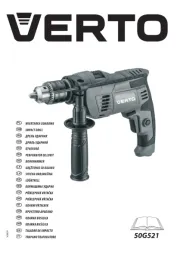
30 Juli 2025
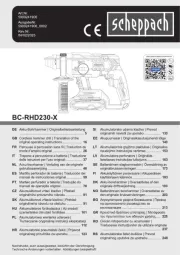
29 Juli 2025
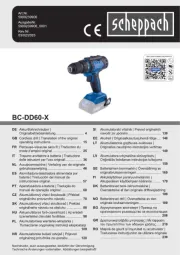
29 Juli 2025
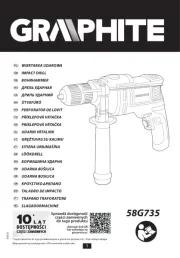
29 Juli 2025
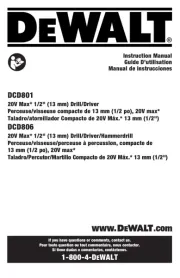
29 Juli 2025
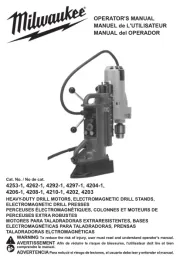
22 Juli 2025
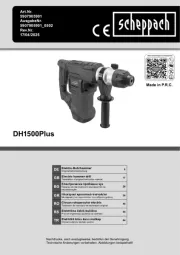
21 Juli 2025
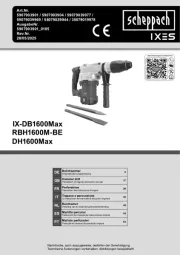
21 Juli 2025
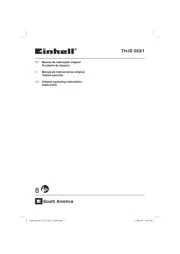
21 Juli 2025
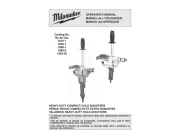
16 Juli 2025